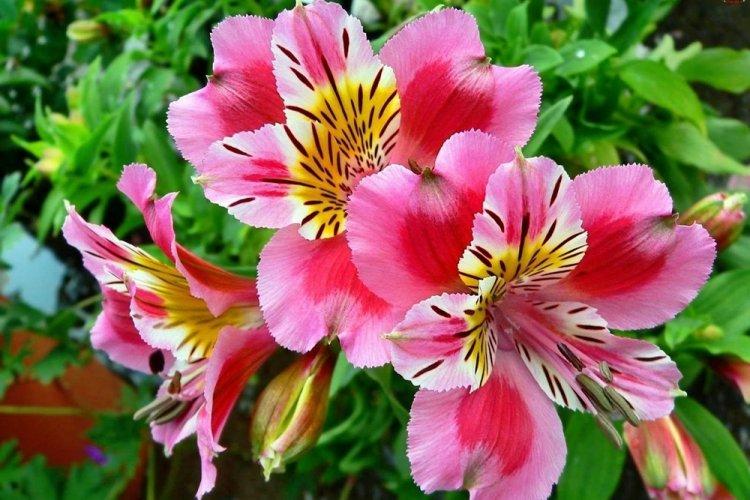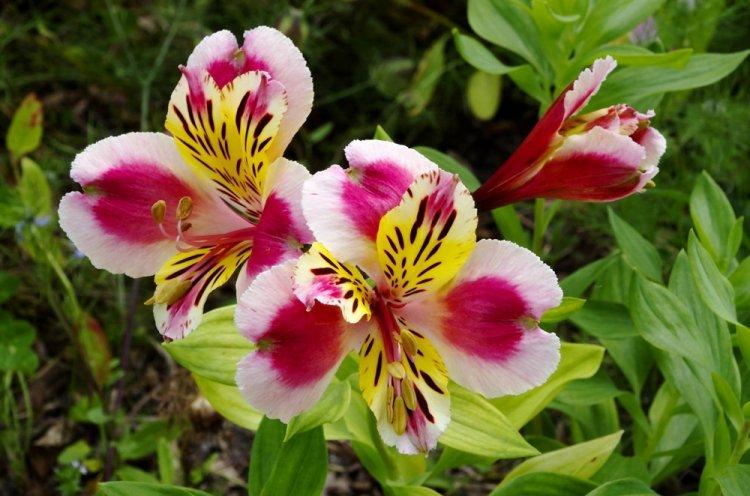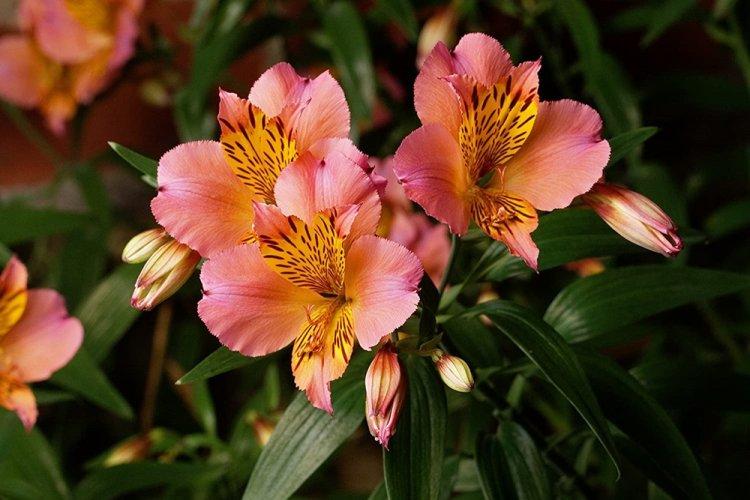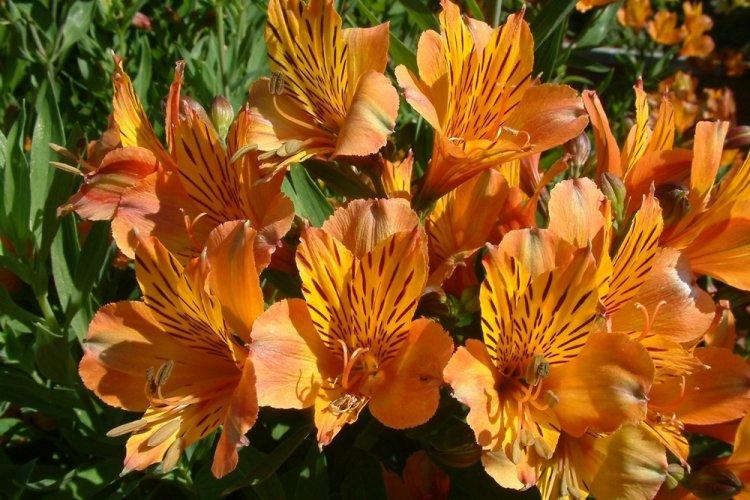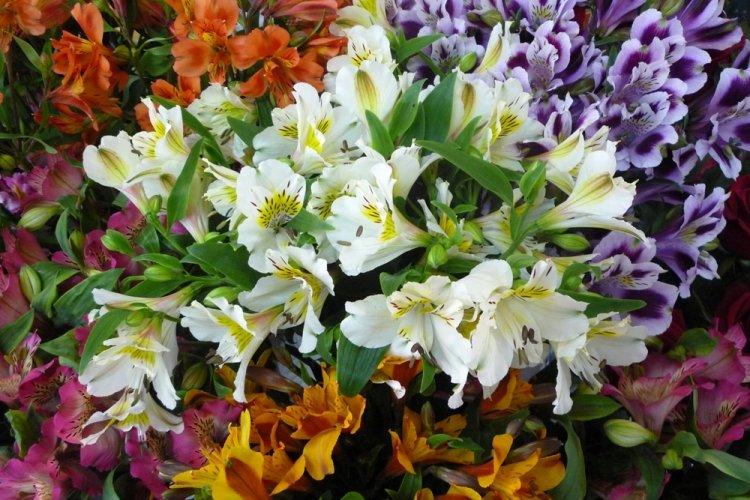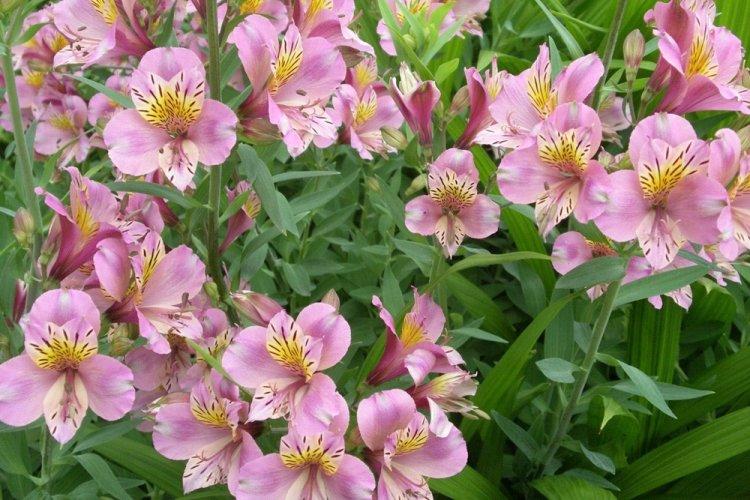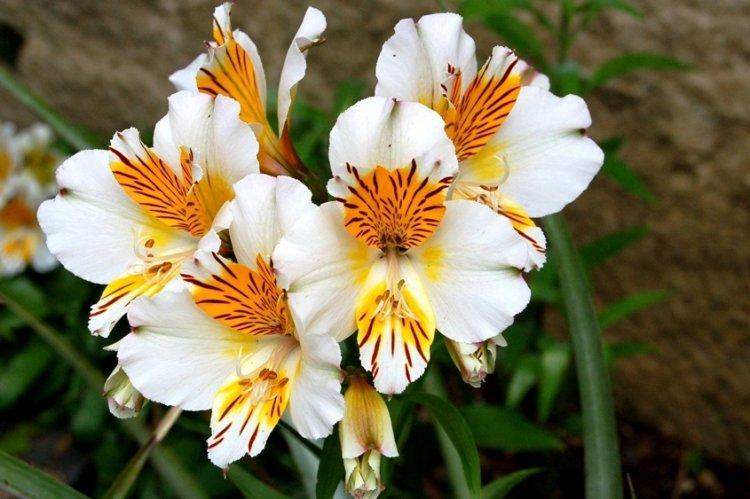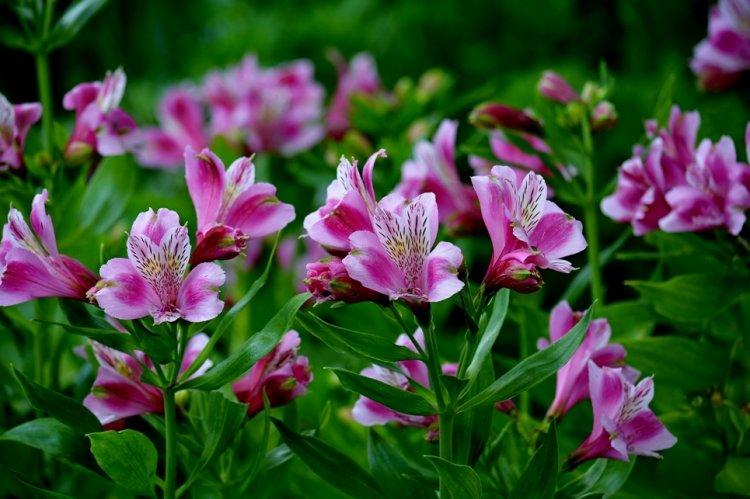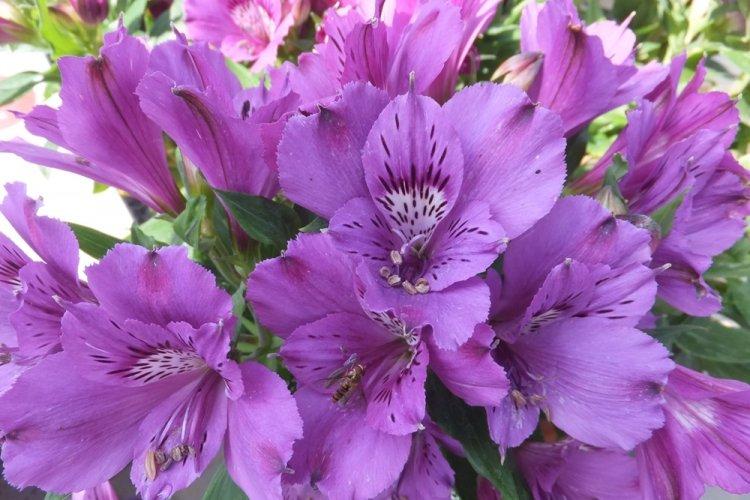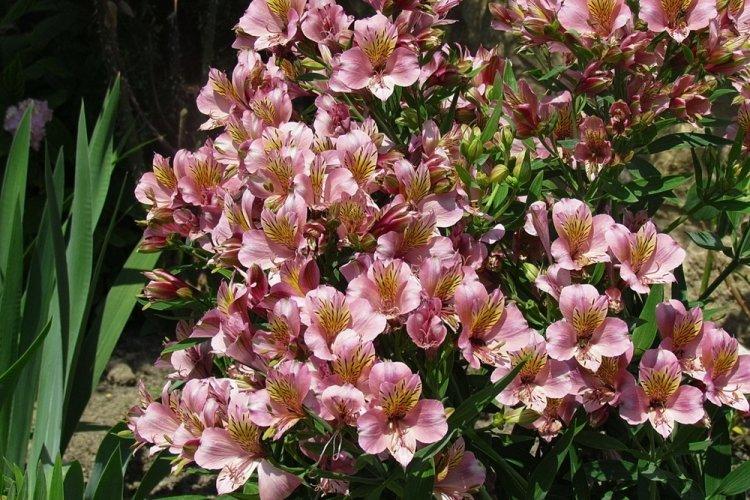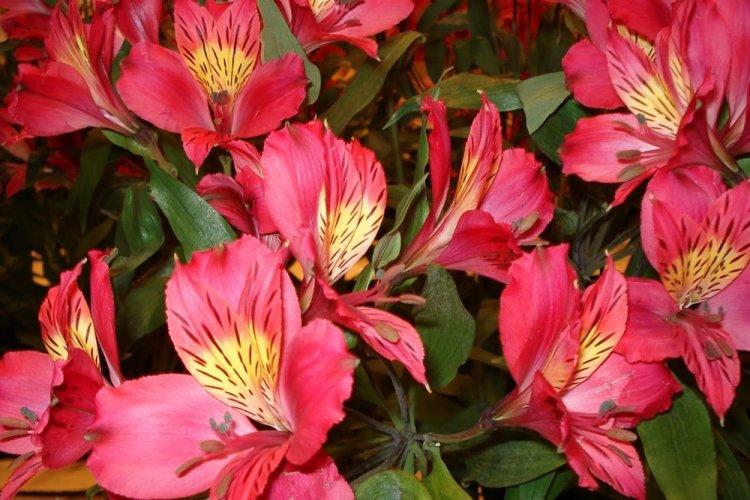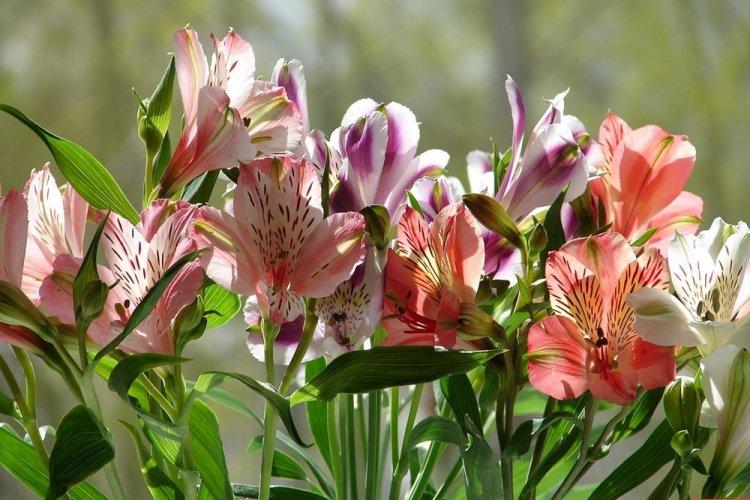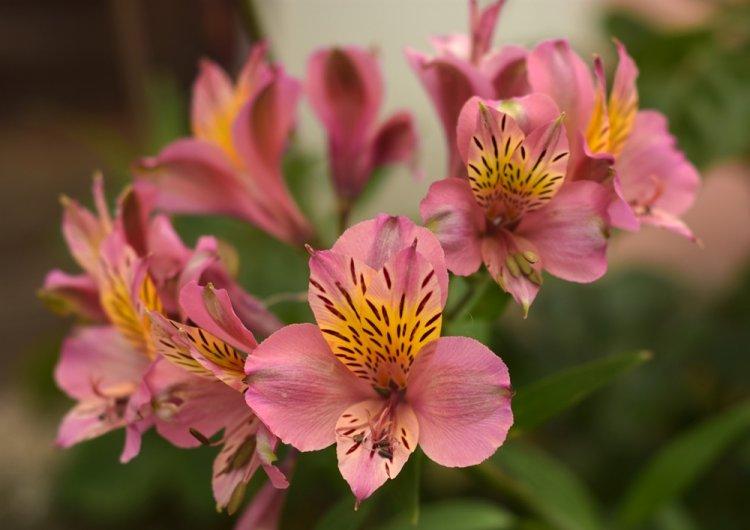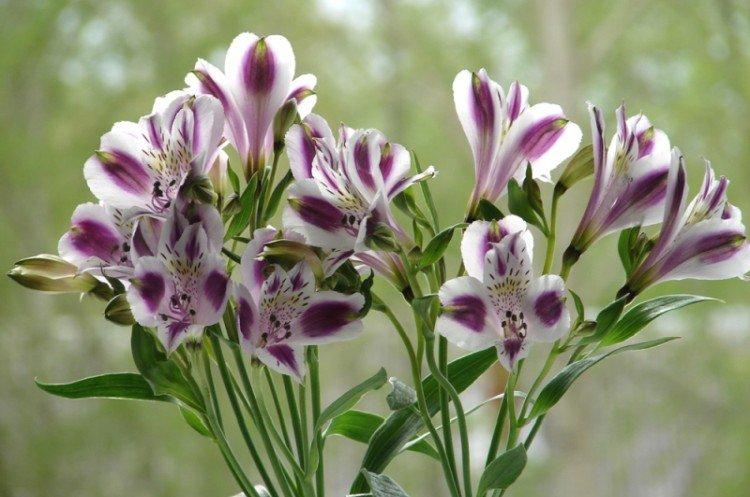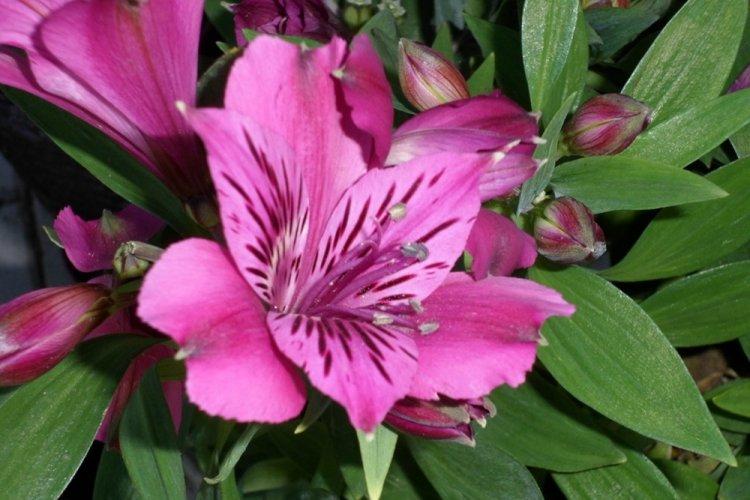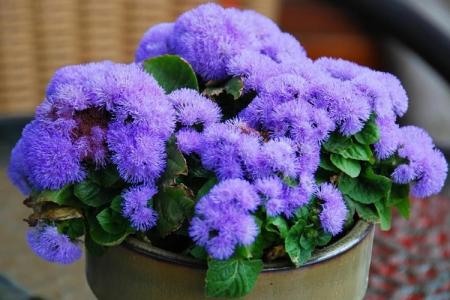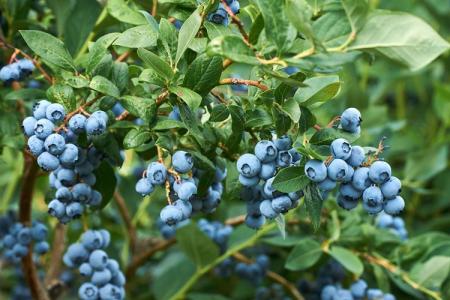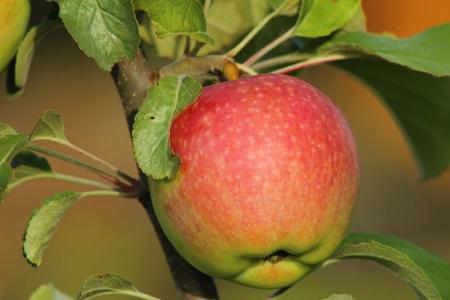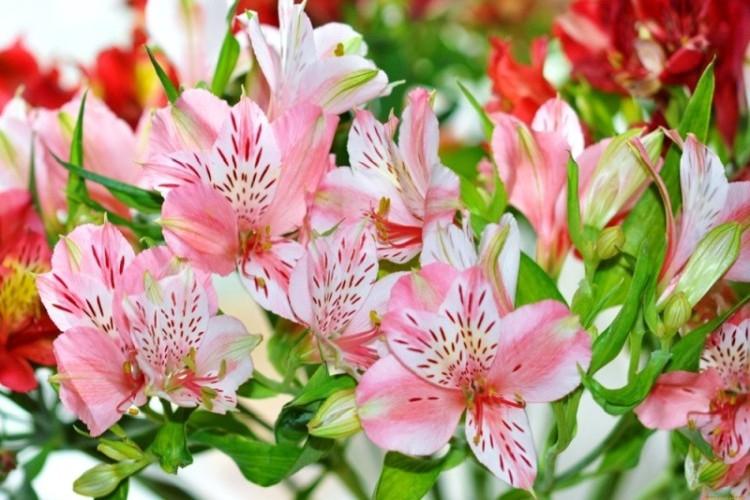
Alstroemeria is not in vain called the Peruvian lily. Small, but very bright and beautiful flowers will become a real decoration of your garden! Dozens of varieties are distinguished by the color of delicate velvety petals. We will help you decide which type of alstroemeria to choose and how to properly care for it!
general information
Alstroemeria is an unusual guest from South America, and for a long time it was called the lily of the Incas. It got its current name after Baron Astrem, a famous Swedish botanist, who brought several species to Europe. It was the eighteenth century, and since then, alstroemeria has won the love of flower growers around the world.
Alstroemeria has flexible straight stems with thin lily leaves, in which the petiole is twisted, due to which the upper side of the plate turns out to be below, and vice versa. The rhizome resembles a spindle and goes deep into the ground, drawing out nutrients.

Lanceolate petals are collected in two circles, and they are different in shape, size and even shades. Yellow, pink, orange and red varieties are popular, but this is far from the limit. There are multicolored, striped and spotted flowers with long protruding stamens.
Alstroemeria is kept in gardens, greenhouses and greenhouses. Low-growing species are planted in boxes or containers to decorate balconies, gazebos and seasonal flower beds. The varieties are very different in height and size, so first be sure to decide on the composition you want to get.

Types of alstroemeria
Botanists and breeders work with several main types of alstroemeria. In gardens, specially bred decorative hybrids are usually found. The multi-colored varieties are especially good, with some of which we will get acquainted now!
Alstroemeria Harmony
It is a large, strong and dense shrub that stretches upwards from 160 cm. Flowers of an unusual reddish-bronze shade are decorated with noticeable black strokes. Alstroemeria Harmony is unpretentious and blooms until the first frost.
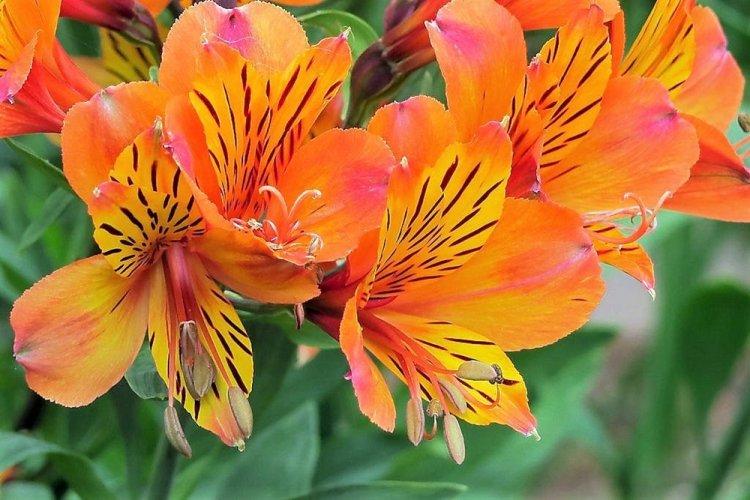
Alstroemeria virginia
Virginia petals are notable for their graceful wavy edge. Flowers of such alstroemeria look very delicate and romantic, and flowering lasts until the first severe frost.
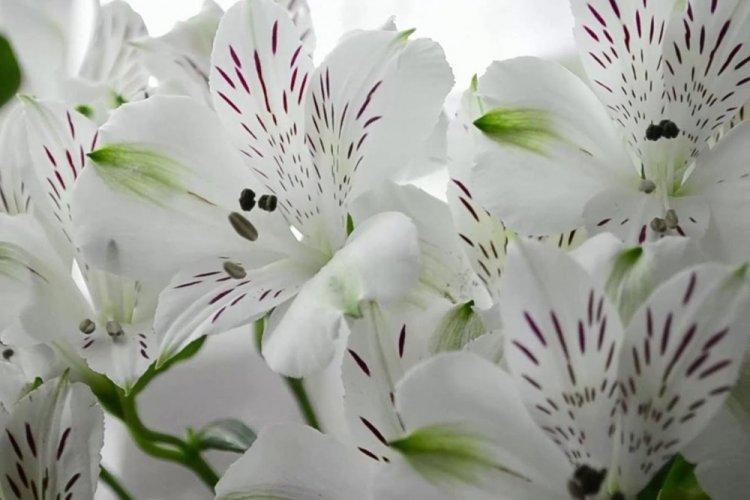
Alstroemeria King Cardinal
This is a very delicate and rather compact variety up to one and a half meters high. He has sensitive weak peduncles that instantly fall off from improper conditions or lack of light. King Cardinal is appreciated for its spectacular scarlet flowers that slightly resemble an orchid.
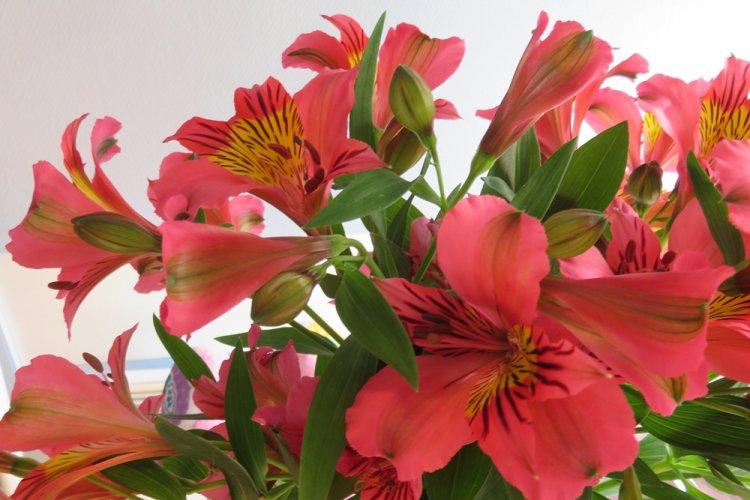
Alstroemeria Orange Queen
Alstroemeria Orange Queen attracts attention with its non-trivial apricot shade. This is the case where the name of the variety fully reflects its essence and characteristics. The petals are covered with variegated brown spots, and the bush itself is quite compact - up to 70 cm tall.

Alstroemeria Canaria
Canaria is another interesting variety with an unusual shade, this time canary yellow. The petals are covered with small brown dots and strokes, so they look even more interesting. Shoots stretch up to one and a half meters.
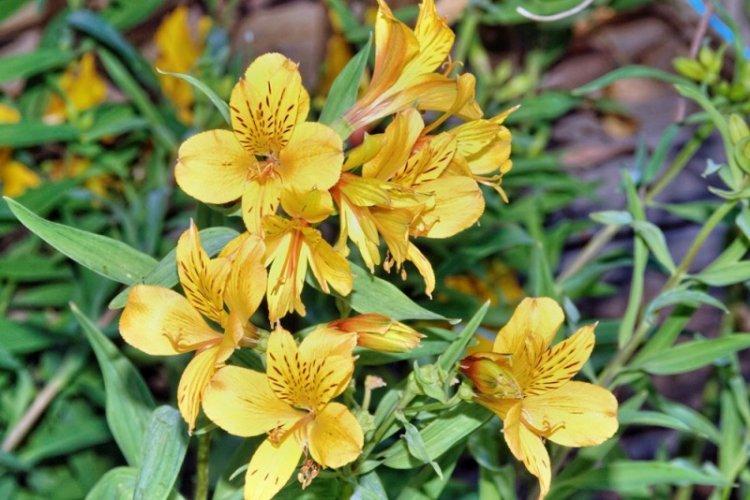
Alstroemeria Alicia
This is the most famous variety of white hybrid alstroemeria, which is sometimes also found in a pink shade. The peculiarity of Alicia is its long flowering, which lasts from early summer to late autumn.
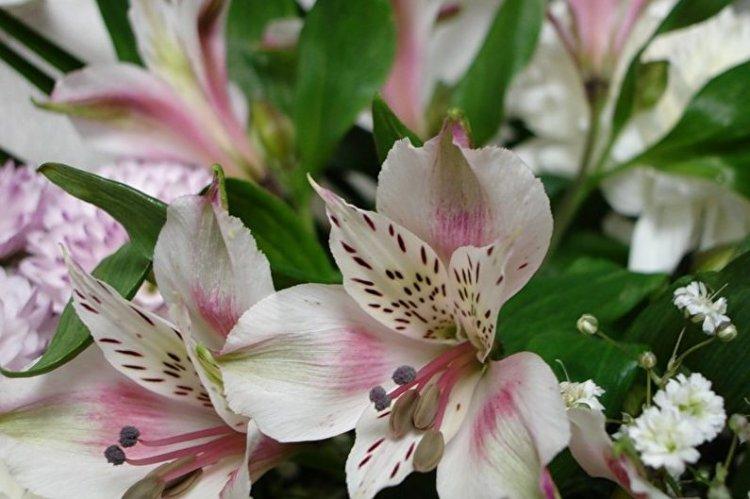
Alstroemeria White Wings
White Wings is another snow-white variety, but this time it is very powerful, large and tall. The stems retract up to 2 meters and are decorated with a scattering of large flowers throughout the summer with a short break between flowering.

Alstroemeria Beauty
Beauty is a romantic lilac alstroemeria with bluish-lilac petals. In the top varieties with unusual colors, this one would probably be in the top ten. Powerful straight stems extend to an average height of about 130-150 cm.
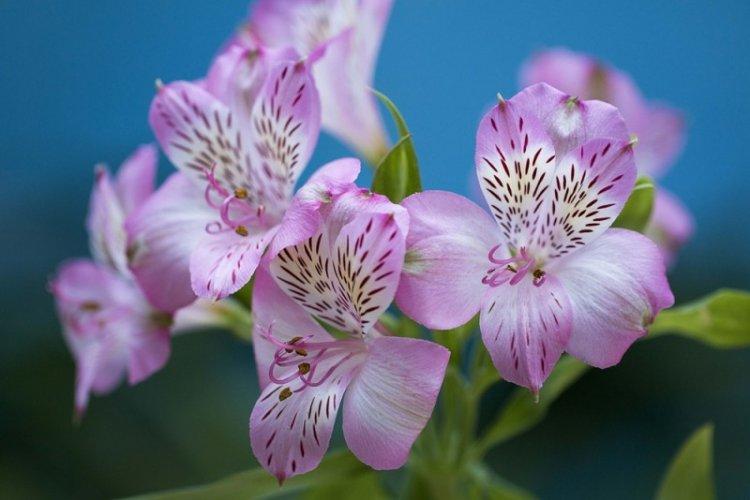
Alstroemeria care
For all the exoticism, alstroemeria is rather unpretentious in our latitudes. She does not need greenhouses, specific conditions or complex maintenance. So even if you have limited experience in floriculture, you can definitely do it on your own!
Temperature
Alstroemeria is very thermophilic, so it needs a mild warm climate. They are engaged in disembarkation by the end of spring, when the temperature stably rises above 20 degrees. The southern plant needs light, but not aggressive direct rays. It does not tolerate strong drafts and wind, so choose a protected area.
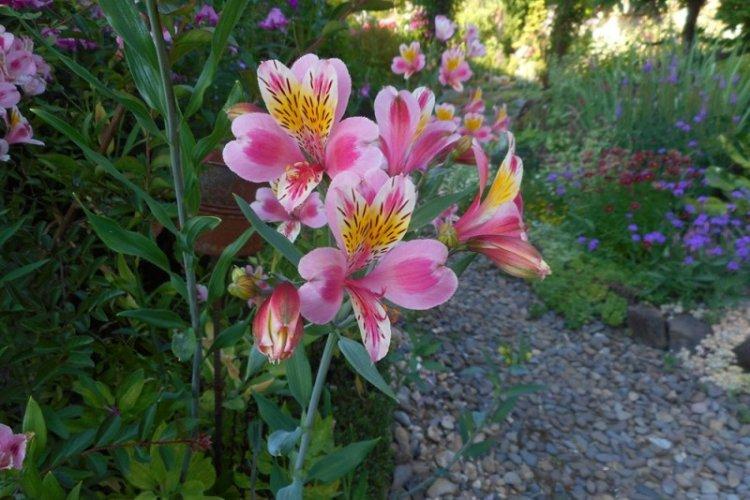
Watering
Alstroemeria requires regular, but not too frequent watering - about once a week. If it's too hot outside or it hasn't rained for too long, you can slightly increase the frequency. If you overdo it, the root system of the flower will rot, but alstroemeria also loses its decorative properties from a lack of moisture.

The soil
Be sure to choose a light clay or sandy soil, into which nutrients and peat are first introduced. The soil should be neutral or, in extreme cases, slightly acidic. You need a good powerful drainage so that moisture does not stagnate at the rhizome. After each watering, mulch the soil from above to keep it loose and breathable.

Fertilizers and feeding
Like other flowering species, alstroemeria need feeding so that it blooms brightly and abundantly. Apply complex fertilizers to the soil about three times a month. Add nitrogen during the growing season, and phosphorus closer to the flowering season.
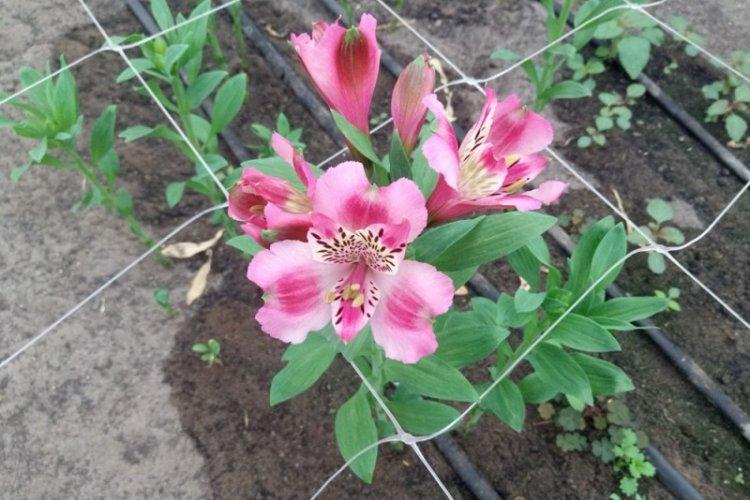
Transplant and reproduction
Alstroemeria is propagated by seeds, but it is faster and more convenient to use the division of the root system. Wait until it fades, carefully dig out the bush and divide it into several parts. Use only a very sharp knife, and cut all cuts with crushed coal.
Old powerful bushes are divided in early spring, without digging - until April. Large cuttings can be immediately planted in the garden in pre-prepared holes. First, plant small cuttings in pots and send them to heat for rooting.

Pruning
During flowering, be sure to remove buds that have already faded. So alstroemeria will not waste resources and nutrients for them. This is necessary for a longer and more luxuriant flowering.

Wintering
In our latitudes, the southern perennial requires protection from freezing. After flowering, cut off the peduncles, and by the end of autumn, shorten all the shoots to 17-18 cm. Cover the bush with dry leaves that remained after harvesting, or fill it up with spruce branches. Stretch a wide thin film on top and sprinkle it with a little garden soil.
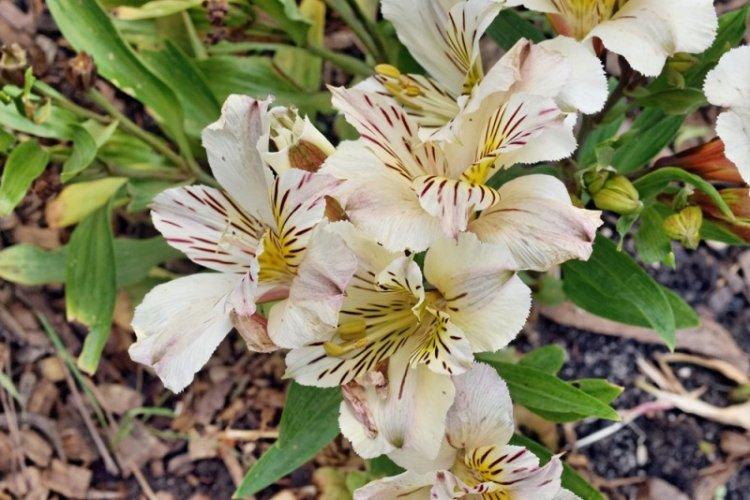
Pest and disease control
To prevent the alstroemeria from being eaten by slugs, mulch the soil well or make an impromptu fence of rubble. So the pests simply cannot get to the flower. Caterpillars are destroyed with insecticides, and spider mites - with special acaricides.
The most common disease of alstroemeria is gray rot. It arises from an excess of moisture and practically does not heal, so it is better to remove heavily damaged flowers completely. If you managed to notice the first signs of a fungus, cut off all the affected parts and treat the seedlings with fungicides.
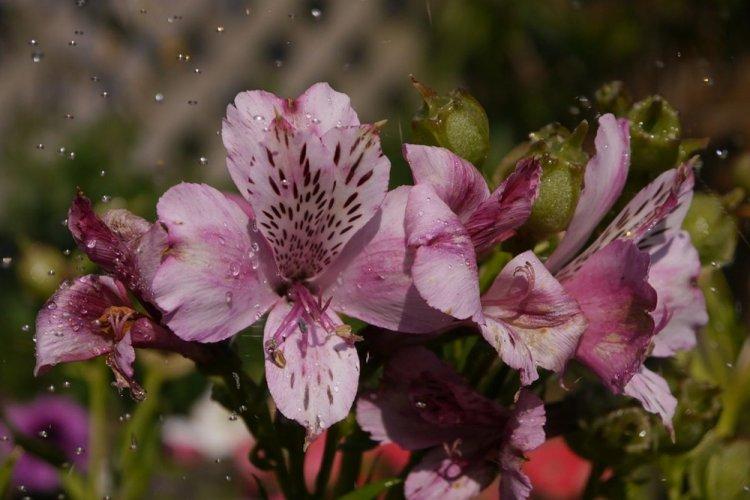
Alstroemeria - photo
Alstroemeria with its beauty and elegance can radically transform any garden or flower bed. Just look at the photo, how beautiful and varied she is!
